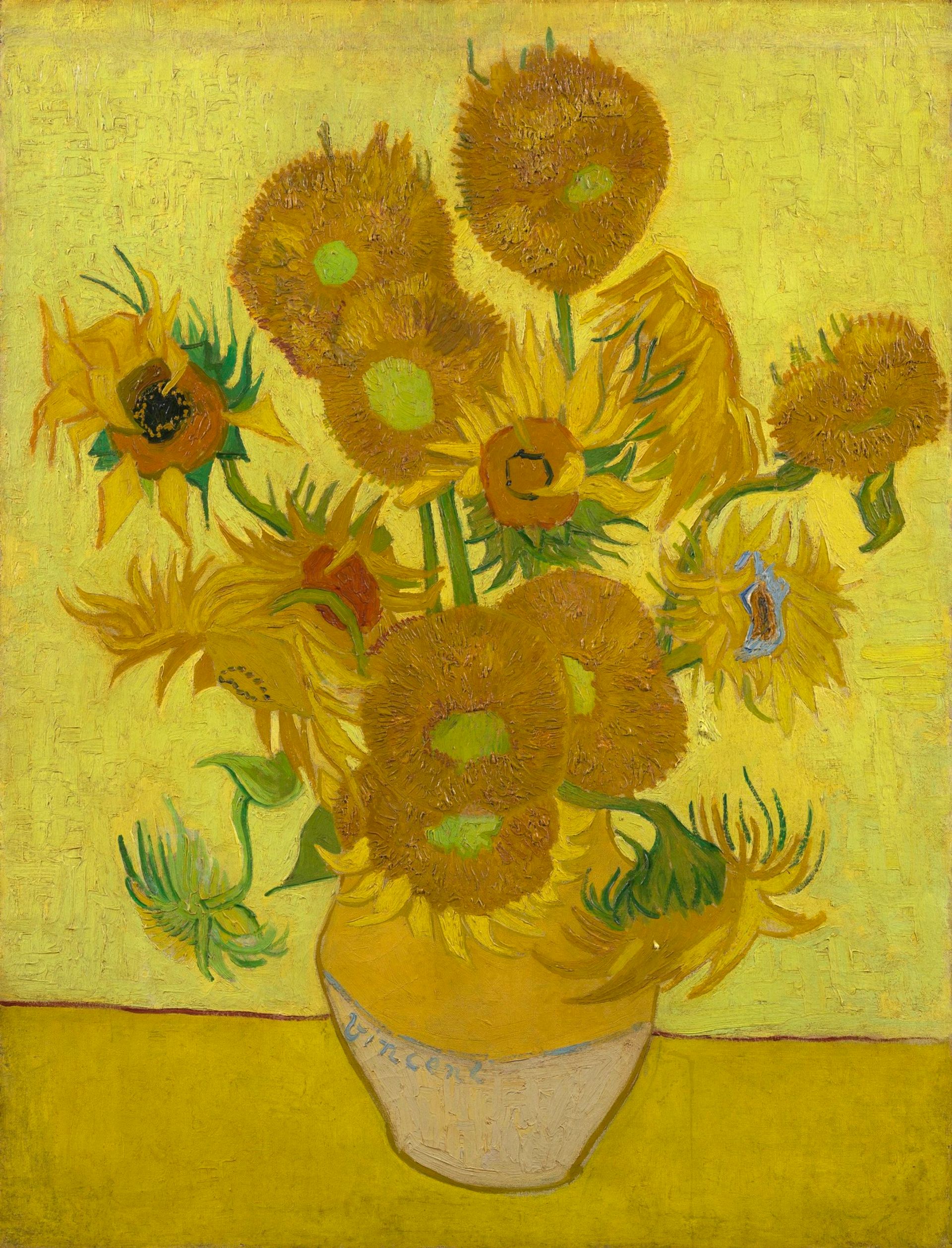The Van Gogh Museum’s Sunflowers will probably be conserved, to help preserve the picture and possibly bring back the artist’s more vibrant colours. The painting has been taken off display and is now being inspected in the conservation studio. A statement by the Amsterdam museum says this is being done “so that we can decide how best to conserve and possibly restore it”. Conservators are now considering whether to remove old varnish, which would enable one to see more of Van Gogh’s original colours—and make the sunflowers appear even more powerful than they do today.

The Amsterdam Sunflowers was painted in the Yellow House in Arles in January 1889, a month after Van Gogh mutilated his ear. The picture, with fifteen blooms set against a yellow background, was probably painted for Gauguin—although he never received it. It is a signed copy of the original version, done five months earlier and now in the National Gallery in London. Van Gogh also made five other still lifes of Sunflowers (they are in Tokyo, Philadelphia, Munich and a private collection and one was destroyed during the Second World War).
A key question that is being examined is whether the varnish of the Amsterdam painting could safely be removed. Van Gogh did not varnish his pictures, preferring a matt finish, and this coating was probably added in 1927, to help protect the surface. The varnish has aged since then, leaving a brownish tinge and dulling Van Gogh’s sparkling colours.
A further problem causing concern is the deterioration of Van Gogh’s chrome yellow pigments, which have darkened and become slightly greenish-brown. This is due to a photochemical reaction that takes place when chrome yellows are exposed to light. The effect on the Amsterdam picture is to make the flowers appear flatter than originally intended. Later tiny retouchings, also probably added in 1927, now appear more orange than Van Gogh’s original ochre-looking flowers. These retouches probably reflect the colour that was present nearly 90 years ago, revealing how the picture has changed since then.

Van Gogh himself was only too aware that pigments could deteriorate. “Paintings fade like flowers,” he wrote to his brother Theo. When Van Gogh made the Amsterdam copy, one of the changes he introduced to his original version was adding a bluish centre to one of the flowers on the right and a reddish centre to another in the middle (botanically these colours are quite incorrect, so they were presumably included for artistic effect). These areas are being examined to see if there have been changes to the pigments.

Another question being investigated is an addition to the original canvas, a 3cm strip of wood attached to the top, to enlarge the picture. This is very clearly visible when viewing the painting and even in good reproductions. Conservators are now examining this additional strip. It was probably added by Van Gogh himself, to give more space around the flowers.
The Amsterdam picture passed to Vincent’s sister-in-law Jo and then to her son. During the Second World War it was evacuated to a bunker in the sand dunes of the Dutch coast and afterwards it returned to the family home, where it hung above the sofa. From 1946 to 1973 it was lent to no fewer than 79 exhibitions around the world, so it was constantly travelling. Since then it has been the star attraction at the Van Gogh Museum, on permanent loan from the family’s Vincent van Gogh Foundation. Because of the importance of the Sunflowers, it is now very rarely lent. Most recently, it was loaned to the National Gallery in 2014, to be shown beside the London version.
The Van Gogh Museum’s Sunflowers is due to go back on display on 24 March. The results of the investigation will then be considered. Because of the importance of the picture, any risks of intervention will be very carefully evaluated. The museum’s statement says that the findings of the current examination “will enable us to keep it in better condition for future generations”.
• Martin Bailey is the author of The Sunflowers are Mine: The Story of Van Gogh’s Masterpiece (Frances Lincoln, 2013)

